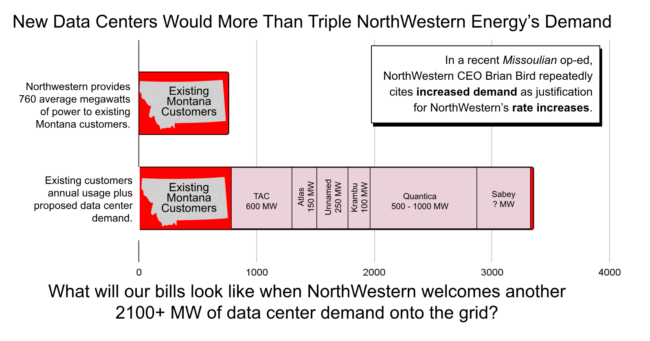by Ben Catton
Data center investors are making plans to come to Montana soon. As in “as soon as possible.” While NorthWestern Energy doesn’t have a clear plan for supplying the vast amount of power it will need, it’s becoming clear who it expects to pay for the generation and grid infrastructure to serve these huge customers. The question is, should Montanans be required to subsidize behemoth tech companies?
In a July 30 BusinessWire press release, NorthWestern expressed its intent to take advantage of its broad “customer base” to “improve cost efficiency” for a massive data center by “spreading the fixed costs of operating Montana-based energy infrastructure.” This should alarm ratepayers, as should the potential for boom-and-bust burdens. Montana utility customers could get stuck paying the bill if these data center developers disappear before they pay for the system expansions that are needed to support their operations.

In rapid fire over the past six months, developers and NorthWestern have rattled off plans for six data centers across Montana. If executed, the current proposals would more than triple NorthWestern’s current annual average electricity load in Montana. In December, NorthWestern Energy announced plans to supply a combined 400 megawatts (MW) of electricity to two data centers near Butte; one is Atlas Power and the other is still unnamed. In April, a Sabey Data Center subsidiary purchased 600 acres in Butte. Sabey hasn’t stated how much power it’s shopping for, but it’s safe to assume that it will also want hundreds of MWs. In June, TAC Data Center announced plans to build a data center on 600 acres near Great Falls. The TAC Data Center will require up to 600 MWs of electricity. Then in late July, two more companies joined the fray. Krambu announced plans for a 100 MW facility and Quantica announced a 500-1000 MW data center. Collectively, these proposals total at least 2100 MWs (before factoring in the electricity needs of the proposed Sabey data center). Currently, NorthWestern provides about 760 average MW of power to its existing Montana customers, according to its annual report to investors. Even if it acquires a larger share of the Colstrip plant at the end of this year, it’s nowhere near enough electricity to cover all of these demands. In a recent op-ed, NorthWestern CEO Brian Bird repeatedly cites increased demand as justification for NorthWestern’s rate increases. But existing customer demand is relatively flat. Forcing customers to pay for new generation and transmission for data centers could be cost-prohibitive.
Power is just the first worry; water is another concern. Data centers can use millions of gallons of water each day. Water in Montana is already allocated to existing water users, and the frequency of droughts is increasing. We need to protect agricultural and community water needs, as well as ecosystem needs such as Montana’s threatened coldwater fisheries.
Luckily, some politicians are realizing that these are local issues. During the Water Policy Interim Committee’s (WPIC) first meeting on July 30, Rep. Jane Gillette (R-Three Forks), who is not on the committee, showed up to suggest that WPIC study how data centers will impact water supplies. Members of the public, organizational leaders ranging from the Montana League of Cities and Towns to the Association of Gallatin Agricultural Irrigators, and members of WPIC supported the idea. Montanans need to see our regulators and elected leadership in the driver’s seat as these deals unfold, not the money-hungry utilities and the potentially fly-by-night data center developers.
This article was published in the September 2025 issue of Down To Earth.

